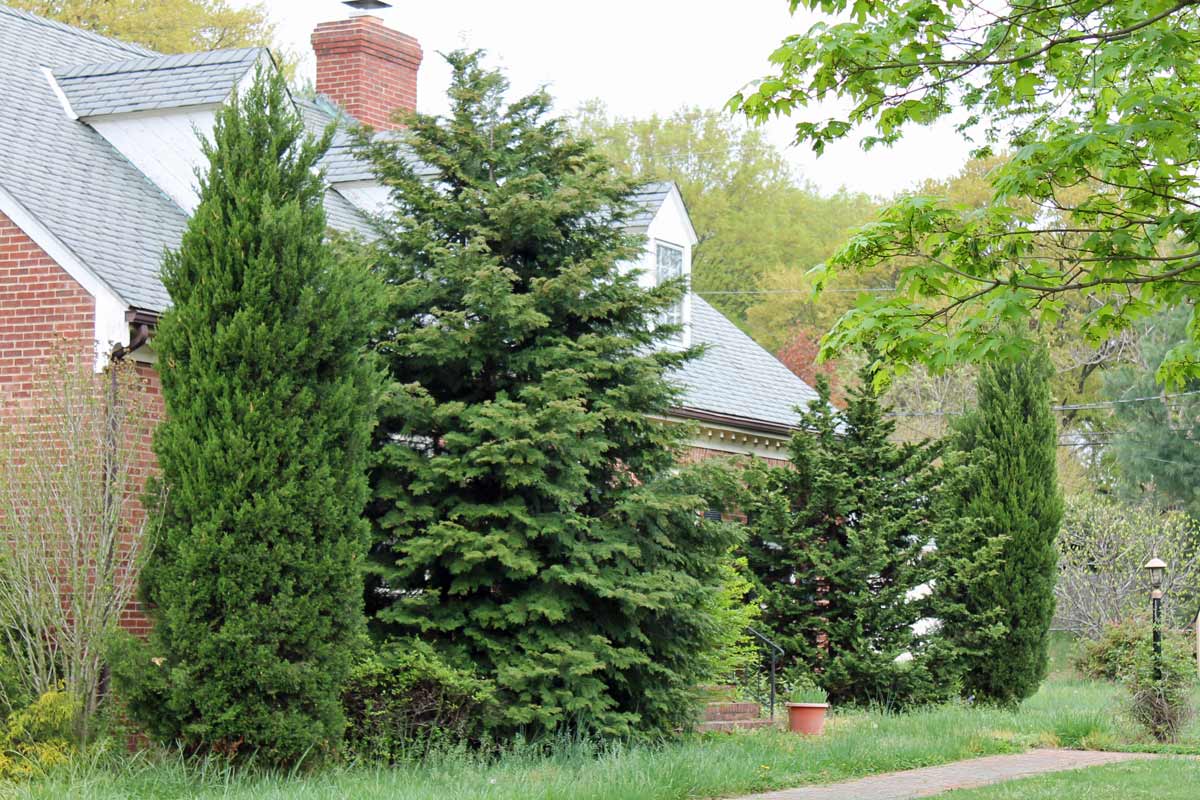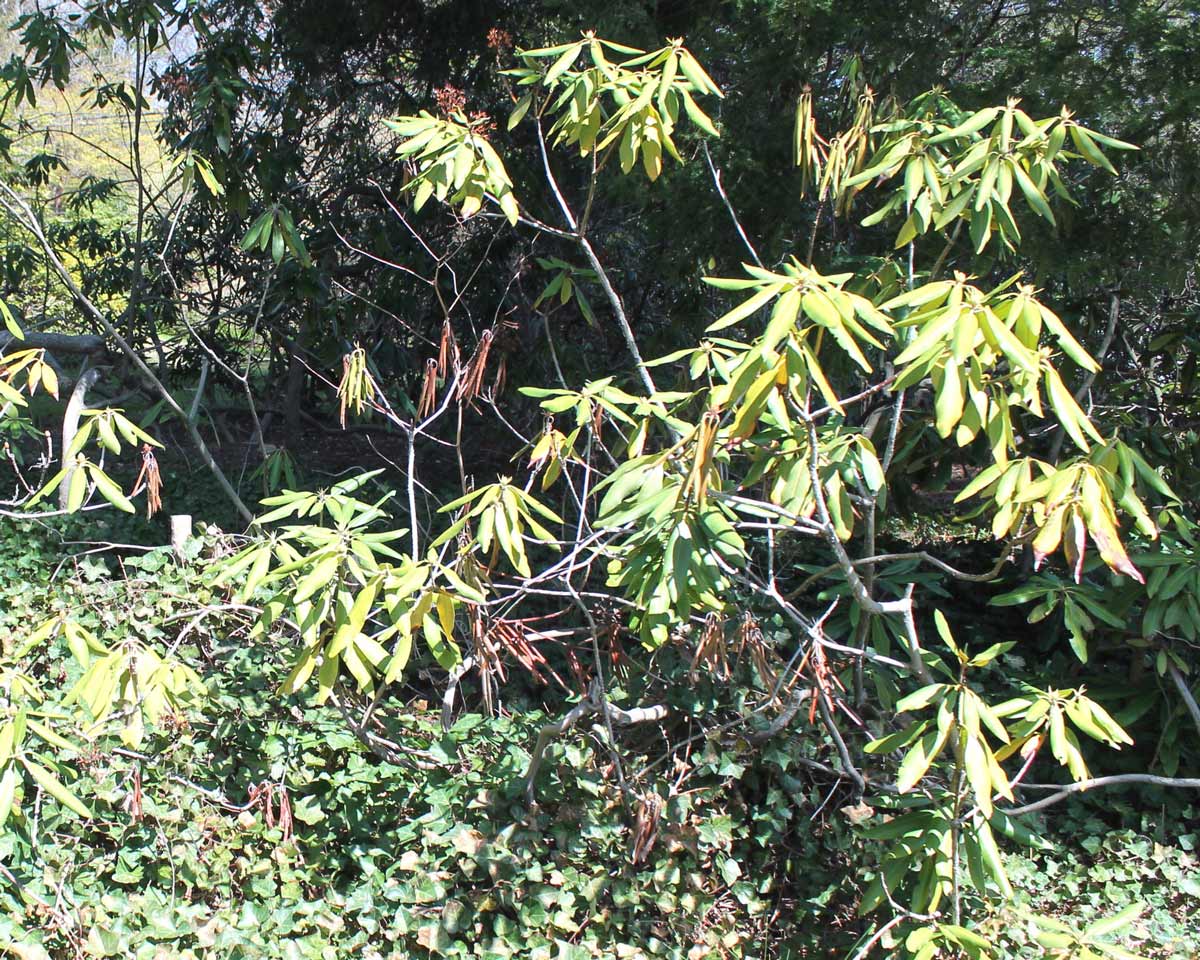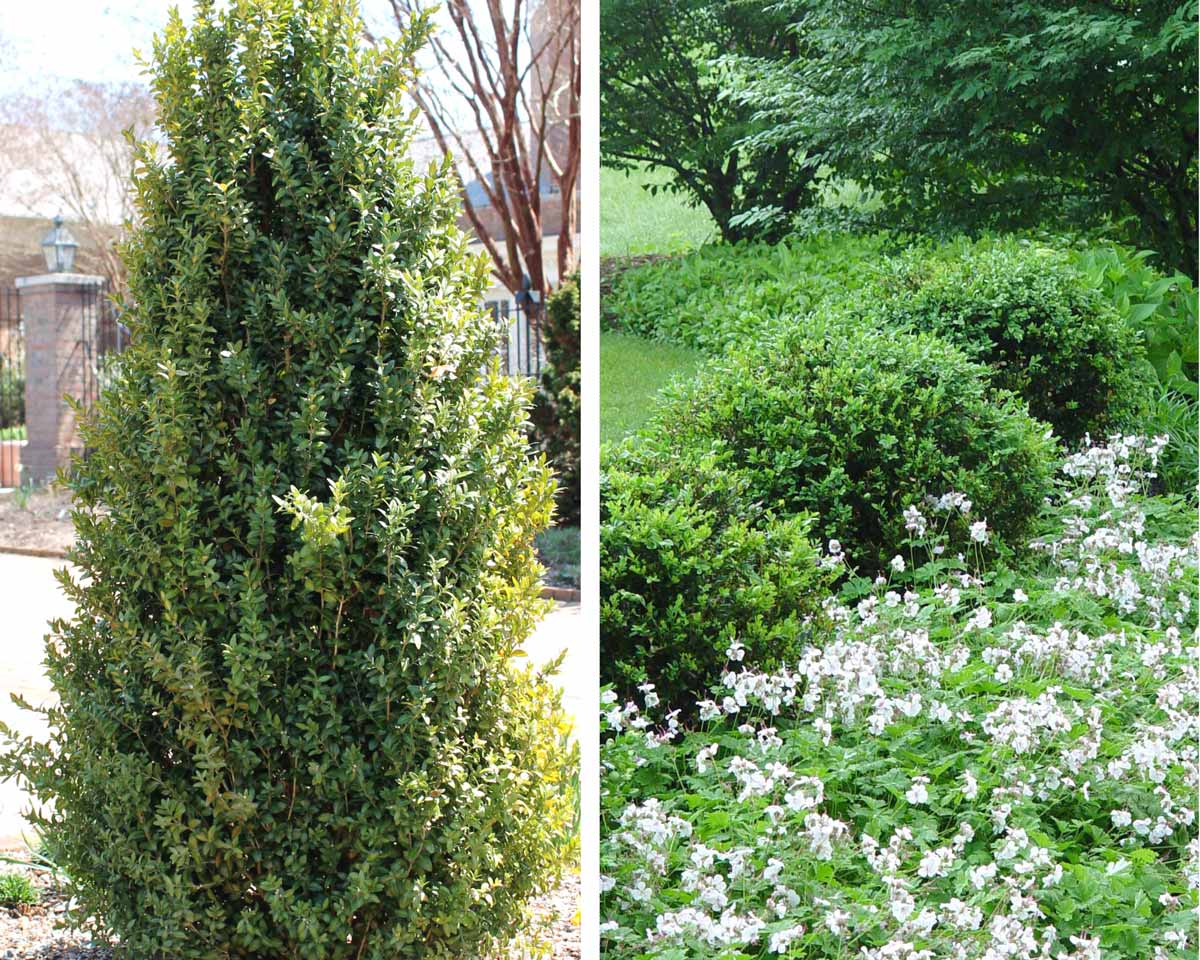Inspect the "Plant Troops" Now for Landscape Changes Later
Fall is a good time of year to do an annual yard inspection to sort out what you like and what needs to change.
As gardeners head to garden centers this month for their fall-planting projects, they’ll be picking plants that could anchor the yard for decades to come.
High on the list of plant-picking questions will be, “How big is this plant going to get?”
It’s an important question because the answer is key to preventing one of landscaping’s top blunders – plants that grow way too big for the available space.
Removing hulking trees and overgrown shrubs is usually more expensive than buying and planting them in the first place, not to mention the not-so-attractive jungle-like look in the meantime.
Unfortunately, the “how-big” question is one that’s almost impossible to answer.
For one thing, plants are living, changing, and growing objects that never really stop growing until deer, drought, or old age kill them.
What’s more, even the same plant can grow at different rates and to different sizes in two different settings.
The resulting lack of a definitive answer is just as frustrating to the consumer who’s trying to avoid yet one more overgrown monstrosity as it is to the garden-center staffer who ends up answering the dreaded “how-big” question with, “It depends.”

Knowing those plant sizes helps head off the leading landscaping miscue of plants that are too big for the space. George Weigel
The first big variable is time. Are you trying to gauge a plant’s size after five years? Ten years? Twenty years?
Obviously, plants are going to be bigger the longer out you go, although the growth rate often slows as plants age.
To come up with some kind of size estimate to put on tags, growers pick a point in time – usually five or 10 years out.
Not all use the same time frame, some estimate growth rates differently than others, and most of them don’t tell you on the tags what their time frame is anyway.
That explains why one garden-center sign might list a shrub’s height at 10 feet while another may say eight feet and yet another may say six feet.

Complicating things further is the effect that A plant’s environment greatly affects its growth rate, such as this rhododendron that’s struggling in clay soil and full sun. George Weigel
Complicating things further is the effect that environmental factors have on growth rates.
A particular juniper may well be 12 feet tall in 10 years in a sunny New Jersey yard of sandy loam. But in a cloudier climate and clay-soil setting, the same juniper may only be half that height by then.
Even the exact position in your own yard can make a big difference.
Plant a shrub in a too-shady spot or stick it near the moisture- and nutrient-sucking root system of a Norway maple, and you’ll likely notice your plant isn’t living up to the size on the tag.
Sizes are influenced by all sorts of factors, including light, soil moisture, soil nutrition, soil type, pH levels, competition from other plants, temperature, drainage, and genetic makeup.
Give them optimals, and plants will grow bigger and faster than average. Give them hurdles, and they may barely survive, much less grow.

Plant tags at least show a plant’s proportions, such as whether it’s a tall upright like the boxwood at left or a short, round plant like the boxwood at right. George Weigel
With so many variables, are plant tags and signs even worth considering?
Yes... if you keep in mind that the listed sizes are guides, not absolutes.
For one thing, tags and signs can at least help you compare sizes among the many different plants.
By comparing listed sizes of, say, a blue holly vs. a boxwood, you’ll see that the blue holly is going to get significantly bigger.
Tags are also helpful when comparing different varieties of a particular plant. If you’re intrigued by a panicle hydrangea, let’s say, you’ll notice that some varieties list heights of six to eight feet while other so-called “dwarf” varieties are gauged at more like four to five feet tall.
A third aid is that the size estimates can help you know the proportions of a plant, i.e. tall and skinny, short and round, low and horizontal, etc.
Finally, rather than think of sizes listed on tags and signs as “ultimate” or “mature” sizes, think of them as targeted “maintenance” sizes. Once plants reach the size you’ve comfortably allowed for them, figure on pruning and trimming to maintain them at that size.
It’s far easier to maintain plants with an annual light trim than to let them get overgrown and then try to corral them back to the desired size.
Keep your planting beds pristine with Preen Garden Weed Preventers. Preen Extended Control Weed Preventer prevents new weeds for up to 6 months and is labeled for use around 600 plants in perennial flower beds; around groundcovers, trees, and shrubs; and in xeriscape settings and rock gardens.